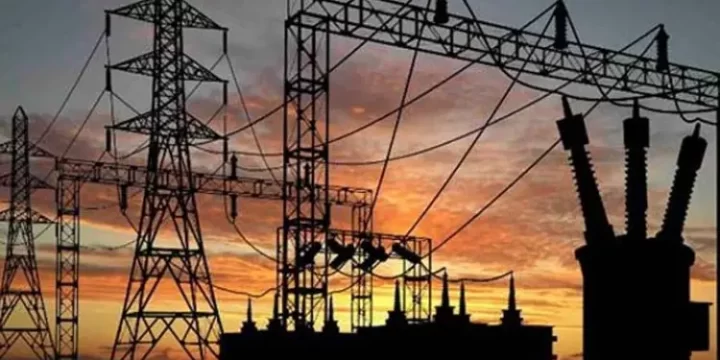Nigeria’s electricity subsidy burden has ballooned significantly, rising by a staggering 220 percent to nearly ₦2 trillion in 2024. This development has raised widespread concerns about the sustainability of government interventions in the power sector and reignited calls for urgent reforms to ensure financial viability and service reliability.
The sharp increase from ₦610 billion in 2023 to ₦1.94 trillion in 2024 is largely attributed to the growing gap between cost-reflective tariffs and the rates paid by most electricity consumers. According to sector insiders and data from the Nigerian Electricity Regulatory Commission (NERC), the federal government’s financial obligations for electricity subsidies have become increasingly unsustainable, especially in light of current fiscal challenges.

The breakdown of the 2024 subsidy shows an average monthly expenditure of about ₦161 billion, with the government struggling to offset payments owed to electricity generation and distribution companies. As a result, the Nigerian Bulk Electricity Trading Plc (NBET) has often received less than half the value of energy supplied, further compounding liquidity issues across the entire electricity value chain.
Sector experts note that multiple factors contributed to the spike in subsidy costs. The removal of fuel subsidies, exchange rate volatility, high inflation, and rising costs of generation inputs all exerted upward pressure on the cost of electricity production. Despite these pressures, electricity tariffs remained relatively unchanged for most consumer categories, leaving the government to shoulder the cost difference.
In a recent address, Minister of Power Adebayo Adelabu acknowledged the severity of the subsidy challenge, noting that the federal government now spends close to ₦200 billion monthly to bridge the gap between generation costs and consumer payments. He emphasized that unless this trend is reversed, the subsidy obligation could surpass ₦2.3 trillion in 2025, further stretching public finances.
NERC’s Q1 2025 report revealed that ₦536.4 billion was spent on electricity subsidies during the first three months of the year alone. This figure represents nearly 60 percent of the total invoice billed to distribution companies during the period. By comparison, only ₦471.7 billion was spent on subsidies in Q4 2024, marking a steady quarterly increase.
Electricity market stakeholders say that the ballooning subsidy payments are choking investment in critical infrastructure. Several generation companies are reportedly struggling with unpaid debts and are scaling back operations, while distribution companies are grappling with revenue shortfalls and rising technical losses.
While the federal government previously introduced “Band A” tariff reforms in April 2024 to reduce subsidy costs for wealthier electricity consumers, the impact has been limited. Inflationary pressures and naira depreciation have wiped out many of the intended cost savings, forcing the government to revisit its pricing strategy.
State governments and civil society groups have also weighed in, with some calling for a phased removal of the electricity subsidy. Proponents of reform argue that the current subsidy model is regressive, benefiting mostly urban and middle-income households at the expense of rural electrification and infrastructure investments.
There is also increasing pressure on the government to explore targeted interventions for vulnerable households instead of blanket subsidies. Experts recommend expanding lifeline tariff schemes, prepaid metering programs, and direct cash transfers to protect low-income consumers while allowing market-based pricing for others.
In response to the growing crisis, the federal government is pushing forward with initiatives to improve metering and reduce energy losses. The Presidential Metering Initiative aims to close the existing metering gap and ensure transparency in electricity billing. Additionally, efforts are being made to restructure underperforming distribution companies to improve efficiency and accountability.
However, these efforts face significant hurdles, including legacy debt, weak enforcement of market rules, and insufficient investment in grid infrastructure. Without a comprehensive strategy that combines pricing reforms with targeted social protection, analysts warn that Nigeria’s power sector could face deeper financial distress in the near future.
The rising electricity subsidy also has broader economic implications. At a time when the government is looking to cut public spending, fund key infrastructure projects, and manage inflation, the growing subsidy bill represents a serious drain on national resources.
As the debate continues, stakeholders across the public and private sectors are urging decisive policy actions to restore financial balance to the power sector. Whether through a gradual tariff adjustment, improved subsidy targeting, or structural reforms, there is broad consensus that the status quo is no longer sustainable.
If Nigeria is to achieve its long-standing goals of energy security and universal electricity access, experts believe that bold decisions must be made now to curb the runaway subsidy and attract the much-needed investments for sector growth.
Support InfoStride News' Credible Journalism: Only credible journalism can guarantee a fair, accountable and transparent society, including democracy and government. It involves a lot of efforts and money. We need your support. Click here to Donate
